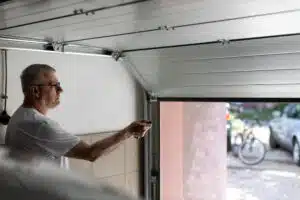Early winter is the perfect time to prepare your home, car and possessions for the cold weather ahead. Don’t neglect your garage space. Examine your garage before the first storm of the season to save money on heating, keep tabs on your garage and its contents and avoid costly home emergencies.
Why Do You Need To Winterize Your Garage?
Winterizing your garage prepares it for harsher weather. Here are a few reasons you’ll want to winterize a garage, especially if it hasn’t been worked on in a while:
- Cracks in walls and gaps in windows can let cold air and pests inside.
- Some possessions stored in your garage may not withstand freezing temperatures.
- Freezing temperatures can affect your car’s battery and other engine parts.
- Calling a professional for garage door issues is easier before winter sets in and more people experience problems.
- If you have pipes running through your garage, poor insulation may cause them to freeze and burst.
- Shared walls and ceilings can leech expensive heat in winter.
Keeping your garage safe against winter weather benefits all areas of your home.
How Do You Winterize Your Garage?
Here’s how to winterize a garage in five easy steps.
1. Clean and Organize
Before you can guard against cold, you have to start with a clean canvas. Take stock of everything stored in your garage and put it in well-labeled places. If your garage is overstuffed, you can donate possessions or move them to different areas of the house, such as an attic or basement.
2. Inspect
Now that you can see your entire garage, look carefully for signs of damage. Take note of cracks in the walls or ceiling. Gaps around windows may let in drafts.
Finally, inspect your garage door’s machinery visually. Look for broken or rusted springs or any fraying cables, but don’t touch or manipulate any part of your garage door mechanism. Garage door machinery is dangerous for anyone who isn’t a trained professional, so leave this work to the experts. You can also hire a professional to inspect your garage door machinery with a trained eye.
3. Insulate
The best time to install insulation in your garage is before winter sets in. The Red Cross recommends insulating basements, attics and garages to help prevent frozen pipes and other winter emergencies.
If you live in an area that gets more than a foot or snow or rain per year, consider waterproofing your garage floor. Acrylic coatings help seal garages against water.
4. Repair Cracks and Drafts
Patch up any holes or cracks you found in your garage with epoxy. Pay special attention to areas surrounding windows and doors and re-seal them with caulk if necessary. Cracks can spread over time if left unattended, so be thorough and make sure your garage is sealed against winter weather.
5. Leave the Garage Door to Professionals
The torsion springs in a garage door are under extreme amounts of pressure. Never touch or attempt to repair these springs yourself. Not only do you risk damaging your garage door and increasing your repair bill, but also these springs can cause injury or death.
Always call professionals to service your garage door. Winter temperatures can cause metal pieces to contract, increasing the risk of garage door failure. Beat the rush by having your garage door inspected and serviced before the cold sets in.
Where Can You Find Trusted Garage Door Professionals in the Tampa Area?
Hiring a professional to maintain your garage door is essential, so make the process seamless by choosing Bayside Garage Doors. At Bayside Garage doors, we offer 24/7 service, affordable special rates and same-day appointments. Maintaining your garage door is an essential step in preparing your garage and home for winter. Contact us at (813) 433-7395 to schedule a garage door service appointment.








